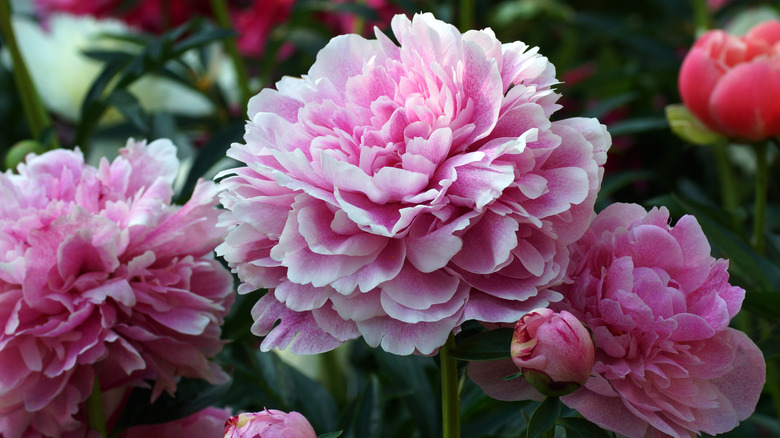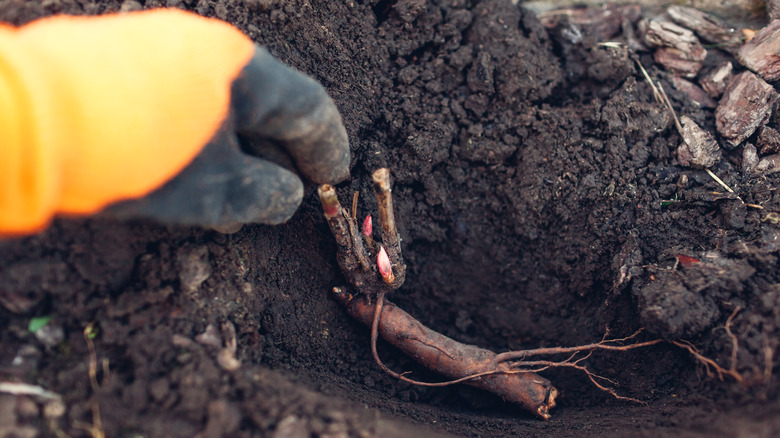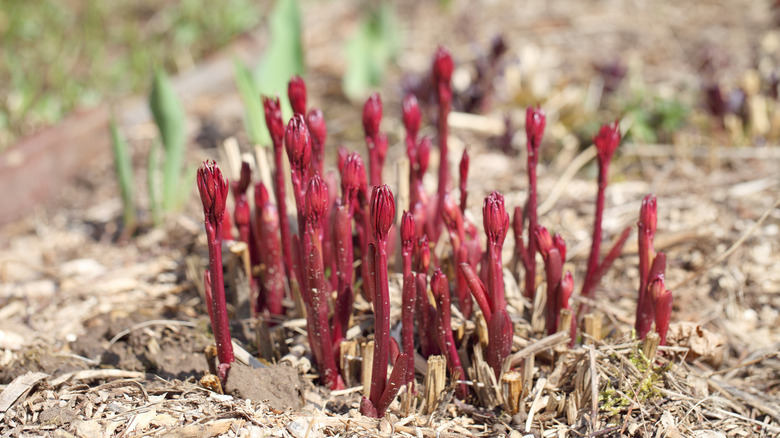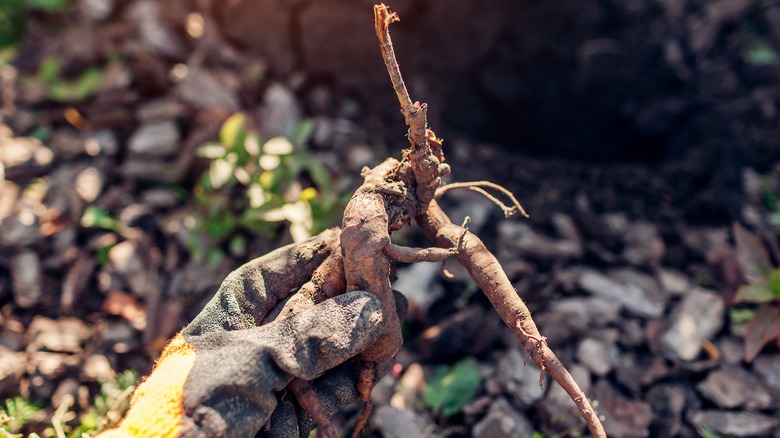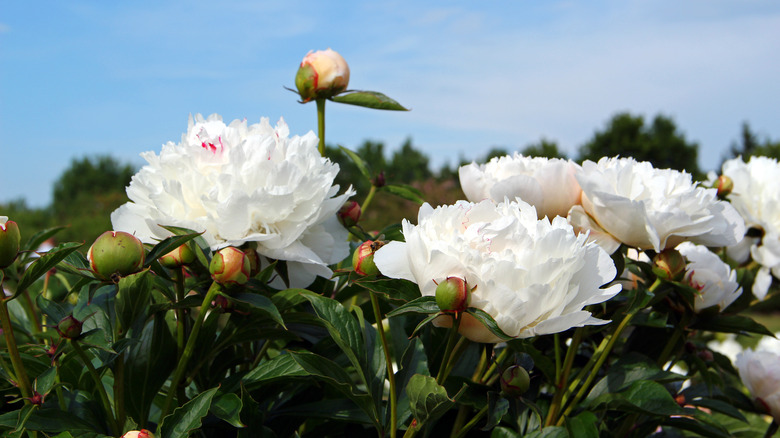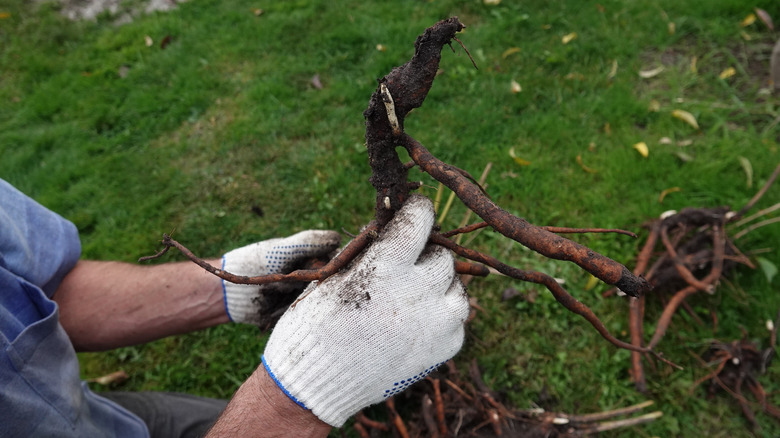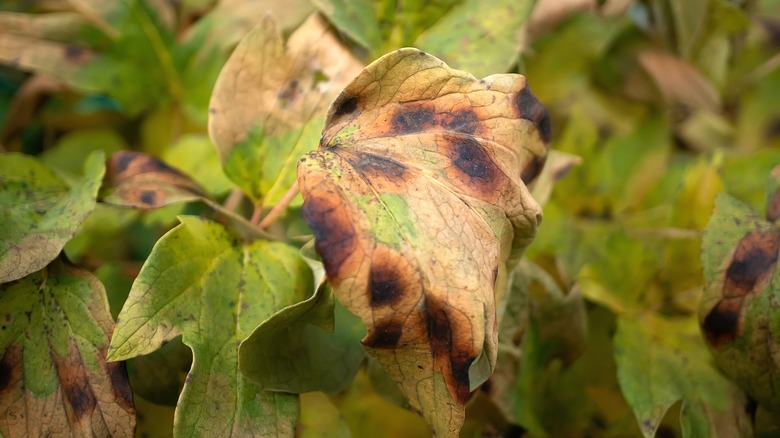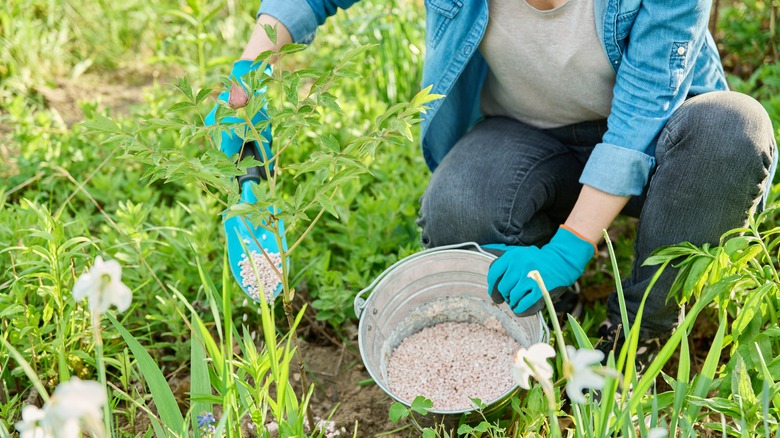Our Professional Gardener On Why Your Peonies Aren't Blooming Properly, And What To Do
Peonies are very long-lived perennials (known to live up to a hundred years or more) and reliable spring bloomers. But sometimes their blooming habits change over time, and they put out fewer or smaller blooms or stop flowering altogether. I've found that there are eight possible reasons for why peonies stop blooming, including issues connected to light exposure, depth of planting, and temperature, as well as some fairly-easy remedies to try.
Gardeners who are experienced with successfully growing peonies know they're very hardy plants, but they do have some specific needs to help them flourish. One of the first signs that your plants need changes in their care routine is when they fail to bloom or when the blooms are much smaller or less numerous than usual. These flowers need full sun to bloom. To keep peonies healthy and thriving through winter, they also require cold temperatures to form buds and need to be planted at a particular depth to bloom consistently. They also benefit from occasional dividing. These guidelines and others will help your peonies thrive.
You may find that older, heirloom varieties are somewhat hardier and less fussy about their growing conditions than newer introductions or hybrids. It's also possible that some plants that have lived a long time in one location may "outgrow" where they are due to changes in sunlight, soil, or other environmental factors. Fortunately, peonies are resilient perennials and will generally respond to positive changes in their care and growing situation.
1. Root exposure
It's important to plant peonies at the proper depth — not too shallow and not too deep. Too deep, and peonies won't get enough warmth from spring sun. Too shallow, and the roots may get overexposed to temperature extremes or too much moisture. Both situations can lead to interrupted or reduced blooming. Generally, plant peonies so that the buds are no more than 2 inches below the soil surface. In southern zones, you should plant early-blooming peonies no deeper than 1 inch below the soil surface.
2. Lack of sunlight
Because of how long-lived they are, what can sometimes happen with peonies is that nearby trees and shrubs grow much larger over time and eventually shade them in their formerly-sunny location. If this happens, relocate the peonies where they will get more sun; six to eight hours of sunlight per day is ideal. When moving peonies to a new location, it's also a great time to divide them, so ideally this should be done in late summer or early autumn. Once replanted, it may take a year for them to start blooming, so be patient.
3. Lack of cold temperatures
Peonies are best suited to grow in USDA zones 3 through 8. But extreme temperatures, either too hot or too cold, can affect their blooming habits. If you live within either extreme end of this range, in zone 3 or 8, some protection from extreme temperatures is helpful. A light, loose layer of natural mulch (pine bark or pine straw) helps protect peony roots from freezing temperatures in winter or high heat in summer. Further, peonies need cold winter temperatures for good bud formation. If winter is unseasonably warm, the shoots may emerge too early and be vulnerable to frost.
4. Immature plants
I frequently divide peonies, and occasionally there will be small sections with one bit of root and one "eye" bud that breaks off from the clump. I always plant these because there will eventually be a new peony plant! Just like other perennials, it may take a while for a small size cutting or division to have enough mass to flower. If you order a bare root peony from a mail order firm, it may be small. Plant it properly and be patient. Usually within two or three years, you will start to get flowers.
5. Recently moved
If you've recently relocated or divided your peonies, they need time get established in their new spot. Sometimes it can take a year or even longer before these newly-planted peonies start to bloom on a yearly schedule. The best time to relocate, divide, or plant peonies is in late summer or early autumn. This gives them the autumn and winter season to get acclimated. Make sure they're in full sun, planted at the proper depth, and have rich, well-draining soil, and in due time you'll see beautiful spring blooms.
6. Clumps need dividing
Because peonies are so long lived, they can be divided repeatedly. This is partly why older gardens often have large numbers of peonies; they're a gift that keeps on giving. Peonies can go without dividing, but in many gardens they may become overcrowded and will benefit from being divided every five years or so. Dividing them is also a good way to propagate peonies to share with others or plant throughout your garden. Divide them in late summer or early autumn when the plants are fairly-dormant, and give them a light layer of loose mulch to protect them.
7. Pests or diseases
Peonies are hardy plants that are resistant to many pests and diseases. The ants that crawl on the buds in spring are harmless, lured by the sweet smell of nectar inside. Many beneficial pollinating insects are drawn to peonies in flower. There are, however, some pests and diseases that can cause peonies not to bloom. For instance, Botrytis blight requires a number of possible interventions including improving soil drainage and using a fungicide. Also watch for thrips, which can interfere with flowering if they lay eggs in unopened buds. If you're dealing with this pest, find out how to get pesky thrips off your peonies.
8. Too much fertilizer
Peonies don't generally require fertilizer to bear vibrant flowers. Too often, gardeners seem to think the solution to lackluster perennial blooms is adding fertilizer, but it's much more important to look at underlying issues. Too much fertilizer can cause peonies to push too much energy into leaf growth, thereby causing blooms to shrink or even fail to develop. The best way to enrich soil nutrients for peonies is a light top dressing of aged manure in the autumn every other year, which will slowly break down into useful nutrients to feed the plant.
